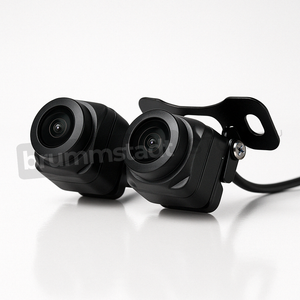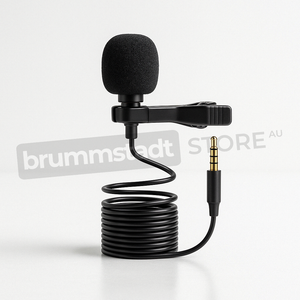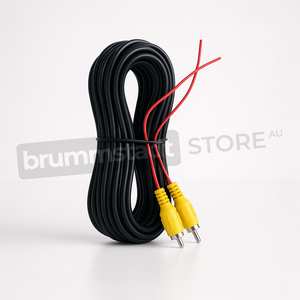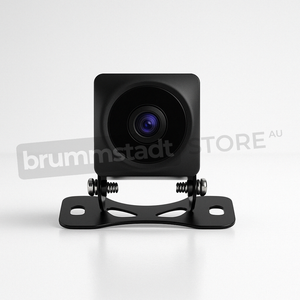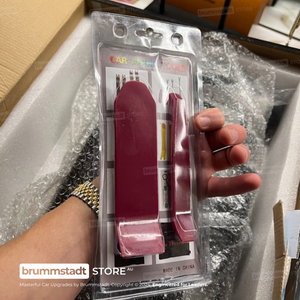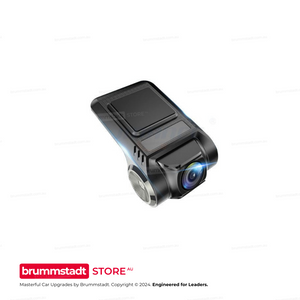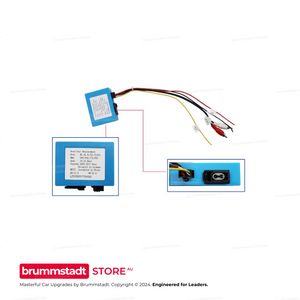Frequently Asked Questions
Everything you need to know about this head unit
Connect the single RCA cable with the yellow plug (included in your package) to extend your Bluetooth signal. This cable doubles as both a camera input AND a Bluetooth/WiFi antenna extension. The two small blue wires attached are antenna boosters that significantly improve connection stability. This simple connection takes 30 seconds and resolves 90% of Bluetooth issues. Make sure it's firmly connected even if you're not using a rear camera.
Try these proven solutions:
1. Quick Fix: Settings → Apps → Z-Link → Disable → Enable → Open (repeat each use)
2. Check Cables: Use the data/charge USB cable (not charge-only)
3. Bluetooth Setting: Disconnect all other Bluetooth connections - CarPlay needs exclusive access
4. Factory Reset Z-Link: Find the pink 'RESET' app, restart, reconnect Bluetooth, then try Z-Link
5. Sound Issues: Switch audio source to 'AUX' or 'USB/AUX' in your vehicle menu
Most issues are resolved with step 1 or 3!
The processor differs between models: The 2/32GB has a 4-Core processor, while 4/64GB and 8/128GB models feature the powerful 8-Core Cortex-A55 processor. Combined with RAM differences: The 2/32GB model with its 4-Core processor and limited RAM may experience slowdowns with heavy multitasking. The 4/64GB with 8-Core provides smooth performance for most users - no lag, seamless app switching, and enough storage for maps and music. The 8/128GB with 8-Core offers maximum performance with its generous RAM allowing unlimited multitasking and massive storage for extensive media libraries. Think of RAM like your desk space - more RAM means you can have more apps open simultaneously without slowing down.
Absolutely normal! These head units are complete replacement systems with their own GPS antenna, microphone, and Bluetooth module. Your factory connectors for these features won't be needed anymore. The important connections are: main power harness, speaker outputs, and the yellow RCA cable (even if not using a camera - it extends Bluetooth range). Any leftover factory plugs can be safely tucked away. If you're unsure about any connection, our support team is here 7 days a week.
Z-Link updates are handled through system firmware updates. Go to Settings → System → System Update. If an update is available, download it to a USB drive (FAT32 format) and install. Important: Never download Z-Link APKs from unofficial sources - they won't work and may cause issues. If you're having compatibility issues with newer iOS versions, the disable/enable workaround (Settings → Apps → Z-Link) usually resolves them while waiting for official updates.
Consider your usage:
• 2/32GB (4-Core): Budget option - fine for basic use, but may lag with multiple apps due to 4-Core processor and limited RAM
• 4/64GB (8-Core): Sweet spot - smooth Android Auto/CarPlay, multitasking, and ample storage
• 8/128GB (8-Core): Premium choice - unlimited multitasking, massive storage, future-proof for years
Most customers choose 4/64GB for the perfect balance of performance and value. The extra RAM makes a huge difference in daily smoothness!
The yellow RCA cable's blue antenna wires also boost WiFi signal! Make sure this cable is connected. Additionally, try these tips: Position the blue antenna wires away from metal surfaces, check that your phone's hotspot is set to 2.4GHz (not 5GHz) for better range, and ensure the head unit's WiFi sleep policy is set to 'Never' in Settings → WiFi → Advanced. For best performance with wireless CarPlay, keep your phone within 1-2 meters of the head unit.
Go to Settings → Sound → Equalizer and adjust to your preference. For more volume, increase the 'Loudness' setting. The 4/64GB and 8/128GB models have superior audio chips that provide cleaner, louder sound. If you have an amplifier, use the RCA outputs for best quality. Also check Settings → Factory Settings (password usually 126) → Audio settings for additional gain controls. Remember: higher-spec models (4GB+) include premium audio components for noticeably better sound.
Yes! Most vehicles work instantly. If not, use the steering wheel learning app: tap the steering wheel icon, press each button on your wheel, and assign functions. For newer vehicles with CANbus, we provide CANbus modules for automatic setup. Some vehicles may need the Key1/Key2 wires connected (usually included in our harness). If you're having trouble, let us know your exact vehicle model and we'll provide specific instructions.
We offer a 30-day return policy. If it doesn't fit or there's a compatibility issue, we'll work with you to resolve it. If you change your mind, a 20% restocking fee applies. Our team verifies compatibility before shipping to minimize issues. We provide installation support 7 days a week to help resolve any problems. With our 3-year warranty and Australian-based support, you can purchase with confidence. Full details in our Refund Policy.
Historical Context: Evolution of the Hyundai Santa Fe
First Generation (SM; 2000–2005):
The initial Santa Fe model presented itself in 2000 as a thoughtful response to growing consumer demand for reliable compact SUVs. Named affectionately after New Mexico's picturesque city, it was Hyundai's first foray into the SUV segment, aiming primarily at North American, European, Australian, and Asian markets. Its design carried a unique blend of affordability, spaciousness, and balanced performance that positioned it strategically within the competitive family-oriented vehicle segment.
Immediately well-received in the United States, Canada, and Australia, the original Santa Fe offered consumers a fresh appeal: ample interior space, versatile cargo options, and a pleasant ride quality that distinguished it from more aggressively-oriented SUVs. Its rounded lines, soft contours, and practical interior resonated well in regions accustomed to rougher, boxier competitors. Offered with efficient 2.4L four-cylinder and more powerful 2.7L V6 petrol engines alongside a sturdy 2.0L diesel variant for specific markets—including Europe and Australia—it quickly became an attractive option for families and urban commuters alike.
More appealing still was its combination of practicality, reliability, and affordability, earning consumer respect and industry recognition. Hyundai’s competitive pricing strategy, combined with commendable build quality, spurred steady sales growth, firmly positioning the Santa Fe as a dependable, family-friendly vehicle across diverse automotive markets.
Second Generation (CM; 2006–2012):
Entering the new millennium's later years, the Santa Fe evolved significantly. It traded its rounded shape for a more chiseled, contemporary appearance, and strengthened overall build quality and interior refinement. Offering increased room, advanced safety features, and enhanced engine performance and economy, Hyundai reinforced Santa Fe's appeal to families and travelers worldwide. The second generation solidified Hyundai’s prominent presence in global SUV segments, building upon the successful and approachable character of the popular first generation.
Third Generation (DM; 2013–2018):
Each subsequent generation of the Santa Fe continued Hyundai’s dedication towards refinement, safety innovation, and greater stylistic maturity. With enhanced communication and technology options—such as Hyundai BlueLink connectivity and more refined infotainment capabilities—this immediate predecessor adopted powerful yet efficient engines, improved interiors, and more practical room distribution. Continued efforts towards safety awarded the third-generation model prestigious international honors, marking clear progress in Hyundai’s evolving SUV success story.
Fourth and Fifth Generations (TM; 2019–present):
Recent iterations continue to reshape the Santa Fe’s image: optimized technology integration, distinguished aesthetic refinements, luxury-oriented interiors, broader array of advanced safety features, and hybrid-electric options now represent Hyundai’s deepened commitment towards market leadership. Each significant step built upon the foundations established by the original SM Santa Fe—bringing dependable transport with consistent focus on customer feedback and direct appeal to family life and urban driving scenarios.
Expanding Capabilities with Modern Infotainment: Brummstadt Head Unit Integration
As helpful as early-generation Santa Fe models have remained over years of driving, modern advancements have transformed vehicle connectivity and technology dramatically. Selecting a carefully fitted, thoughtfully designed aftermarket head unit integration—such as the upgrades provided by Brummstadt—amplifies infotainment versatility within the original Santa Fe interior design. Brummstadt specializes in delivering high-quality, precision-designed head unit replacements that specifically complement older vehicle models, bridging a noticeable technology gap without compromising vehicle originality.
Their premium infotainment head unit supports wired and wireless Apple CarPlay and Android Auto, allowing intuitive interaction with robust apps like Google Maps, Apple Maps, and WAZE. A wonder of convenience emerges during leisurely dining with family or friends: envision effortlessly setting a house destination on a smartphone at your restaurant table. Upon returning to the Santa Fe, the planned route seamlessly transfers onto the Brummstadt head unit, presenting clearly and precisely on an attractive interface for straightforward, worry-free driving.
Beyond navigation essentials, Brummstadt’s integration further elevates in-car entertainment possibilities. Passengers enjoying longer journeys may connect joysticks via built-in USB interfaces, enabling multiplayer games on the sizable, vibrant infotainment screen, transforming unremarkable rides into appealing and memorable adventures. For drivers interested in safety and security improvements, optional 1080p HD camera installations are available, efficiently facilitating comprehensive visual coverage through front and rear recordings, essential for secure maneuvering, aiding parking activities, and documenting unforeseen road incidents.
Adding further intelligent convenience, the Brummstadt head unit integrates smart voice assistant functions smoothly. Beyond standard operations like media playback, navigation requests, and hands-free communication, the system conveniently integrates with connected smart home devices. For instance, the vehicle's voice assistant—such as Siri or Google Assistant—can remotely activate household elements in advance through simple commands ("Hey Siri, turn on the porch lights!"), seamlessly tying vehicle operation, comfort, and practicality into distinctly modern lifestyles.
Benefits and Advantages of Driving the Hyundai Santa Fe SM (2000-2005):
The Santa Fe SM is celebrated for its balanced overall performance, practicality, and approachable daily-driver characteristics. Robust and remarkably reliable for its era, the vehicle reflects value-driven engineering that resonates across diverse international market segments—often praised for precise steering feedback, smooth, comfortable ride quality, and noteworthy cargo flexibility. Its approachable pricing and low running costs have historically made Santa Fe a practical solution for families, urban commuters, and weekend exploration.
Enthusiastically returning to favored older automotive choices spans beyond pure nostalgia, validating many customers’ trust in reliability, comfort, and practicality offered by such early Hyundai models. Thoughtfully selected aftermarket technological solutions extend vehicle functionality and appeal, readily enabling owners to maintain older vehicles' practicality and value advantages without compromising expectations of contemporary in-vehicle experience.
Thus, driving the well-regarded Hyundai Santa Fe SM—especially when thoughtfully fitted with modern infotainment upgrades—transforms into a meaningful page of automotive appreciation, uniting foundational practicality and comfortable driving characteristics with contemporary technology, convenience, and seamless connectivity.














